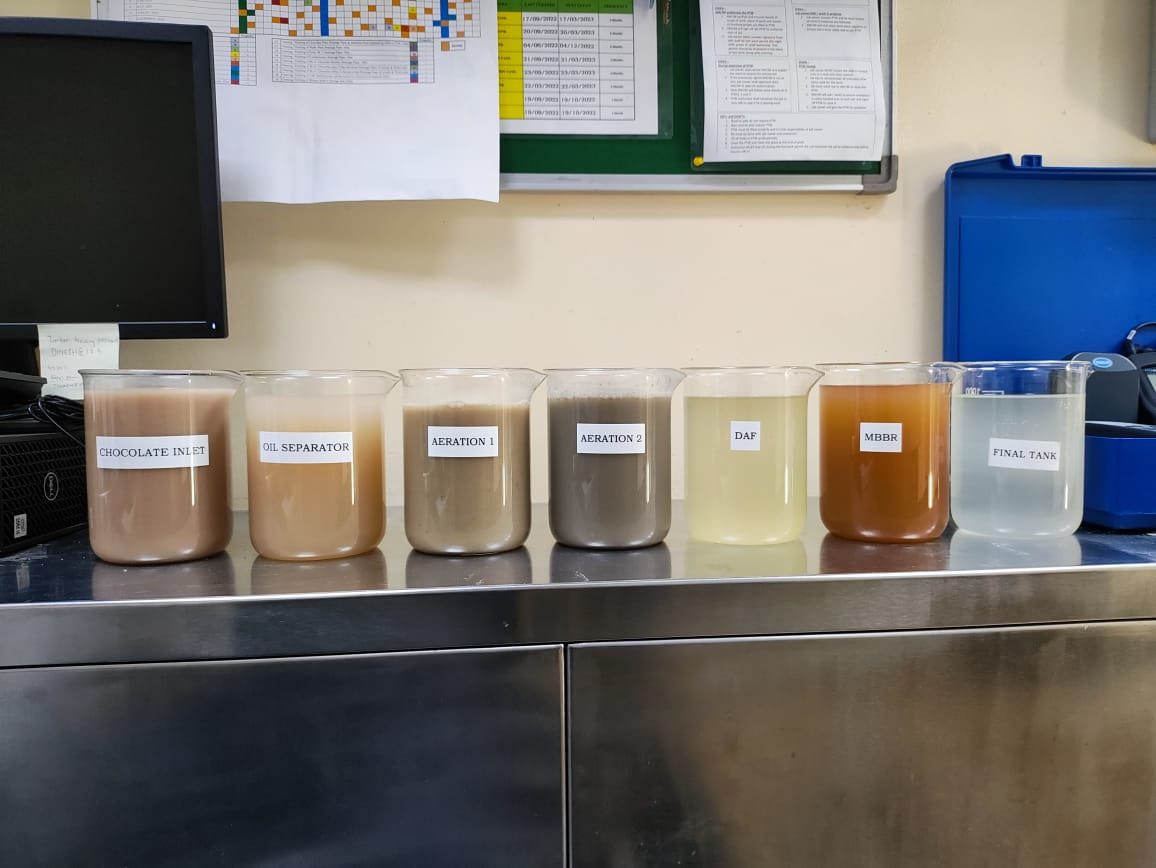Chocolate wastewater treatment
This is the time of the year when the world consumes a ton of chocolate. Chocolate is a beloved treat enjoyed by people around the world. However, the production of chocolate can generate a significant amount of wastewater that needs to be properly treated to avoid environmental contamination. In this blog article, we will explore the process of chocolate wastewater treatment and the various methods that are used to effectively manage this wastewater.
Chocolate Manufacturing Wastewater
The production of chocolate involves several steps, including roasting, grinding, and conching. These processes generate a large volume of wastewater that contains a range of contaminants, including cocoa solids, oils, and sugars. If left untreated, this wastewater can have a negative impact on the environment, including contaminating waterways and harming aquatic life.
To effectively treat chocolate wastewater, it is necessary to remove the contaminants and make the water safe to be released back into the environment. There are several methods that are commonly used for this purpose, including physical, chemical, and biological treatment.
Physical Treatment Processes
Physical treatment involves using physical processes to remove contaminants from the wastewater. This can include methods such as sedimentation, which uses gravity to separate the solids from the water, and filtration, which uses a filter to remove particles from the water.
Chemical Treatment Processes
Chemical treatment involves the use of chemicals to remove contaminants from wastewater. This can include methods such as coagulation, which involves adding chemicals to the wastewater to form larger particles that can be easily removed, and flocculation, which involves stirring the wastewater to encourage the formation of flocs, or clumps, of contaminants that can be removed.
Biological Treatment Processes
Biological treatment involves using microorganisms to break down the contaminants in the wastewater. This can include methods such as aerobic treatment, which involves the use of oxygen to support the growth of microorganisms that break down the contaminants, and anaerobic treatment, which involves the use of microorganisms that can survive in the absence of oxygen.
There are also a number of advanced treatment methods that are used to treat chocolate wastewater, including membrane filtration, which uses a membrane to remove contaminants from the water, and reverse osmosis, which uses pressure to force the water through a membrane to remove contaminants.
In addition to these treatment methods, it is also important to consider the reuse and recycling of the treated wastewater. This can help to minimize the impact on the environment and reduce the demand for fresh water.
Treated Wastewater Reuse
One example of the reuse of chocolate wastewater is in the irrigation of crops. By treating the wastewater to remove contaminants and make it safe for use, it can be used to irrigate crops, which can help to reduce the demand for fresh water and reduce the risk of environmental contamination.
Another example is the reuse of wastewater in the production process. By treating the wastewater to a high level of purity, it can be reused in the production of chocolate, which can help to reduce the overall volume of wastewater generated.

Typical Chocolate Wastewater Characteristics
pH: 5.5 to 8.5 (depending on chemicals used for cleaning in the manufacturing processes)
COD: 10000 to 20,000 mg/L
BOD: 5000 to 12,000 mg/L
TSS: 1000 to 5000 mg/L
FOG: 50 to 500 mg/L
These are the typical wastewater characteristics and you should get your wastewater samples tested or benchmarked against similar manufacturing plants before designing your wastewater treatment plant
Recommended Wastewater Treatment Scheme
The ideal chocolate wastewater treatment plant will utilize a variety of physical, chemical, and biological wastewater treatment processes for full treatment. The following is a recommended treatment scheme that we have successfullyprovided for a number of chocolate wastewater treatment plants
Step 1: pH correction
Step 2: Equalization
Step 3: Fats, oil, and grease (FOG) removal
Step 4: 2-stage Anaerobic or Aerobic biological treatment process
Step 5: Biomass Separation (clarifiers or membranes or DAF)
Step 6: Filtration
In conclusion, the treatment of chocolate wastewater is an important aspect of the production of chocolate. By using a range of methods, including physical, chemical, and biological treatment, it is possible to effectively remove contaminants from the wastewater and make it safe to be released back into the environment. The reuse and recycling of treated wastewater can also help to minimize the impact on the environment and reduce the demand for fresh water.